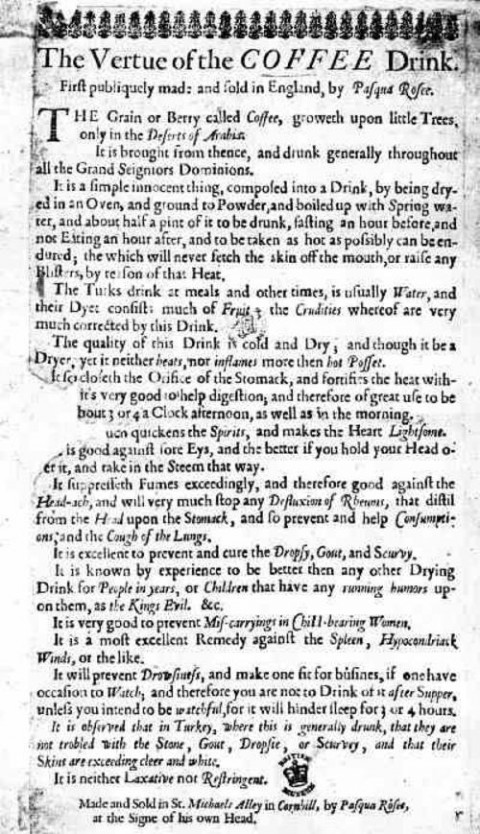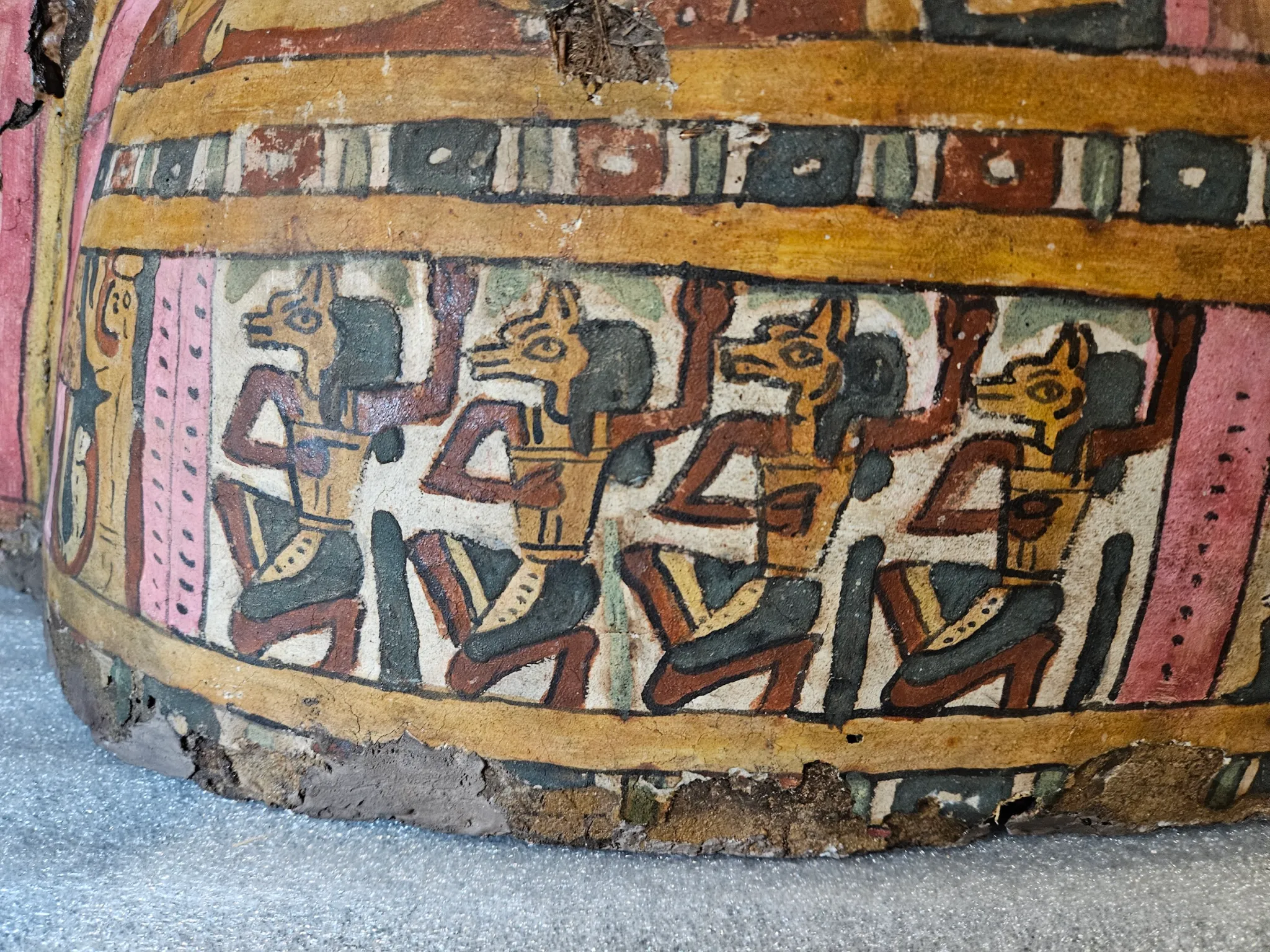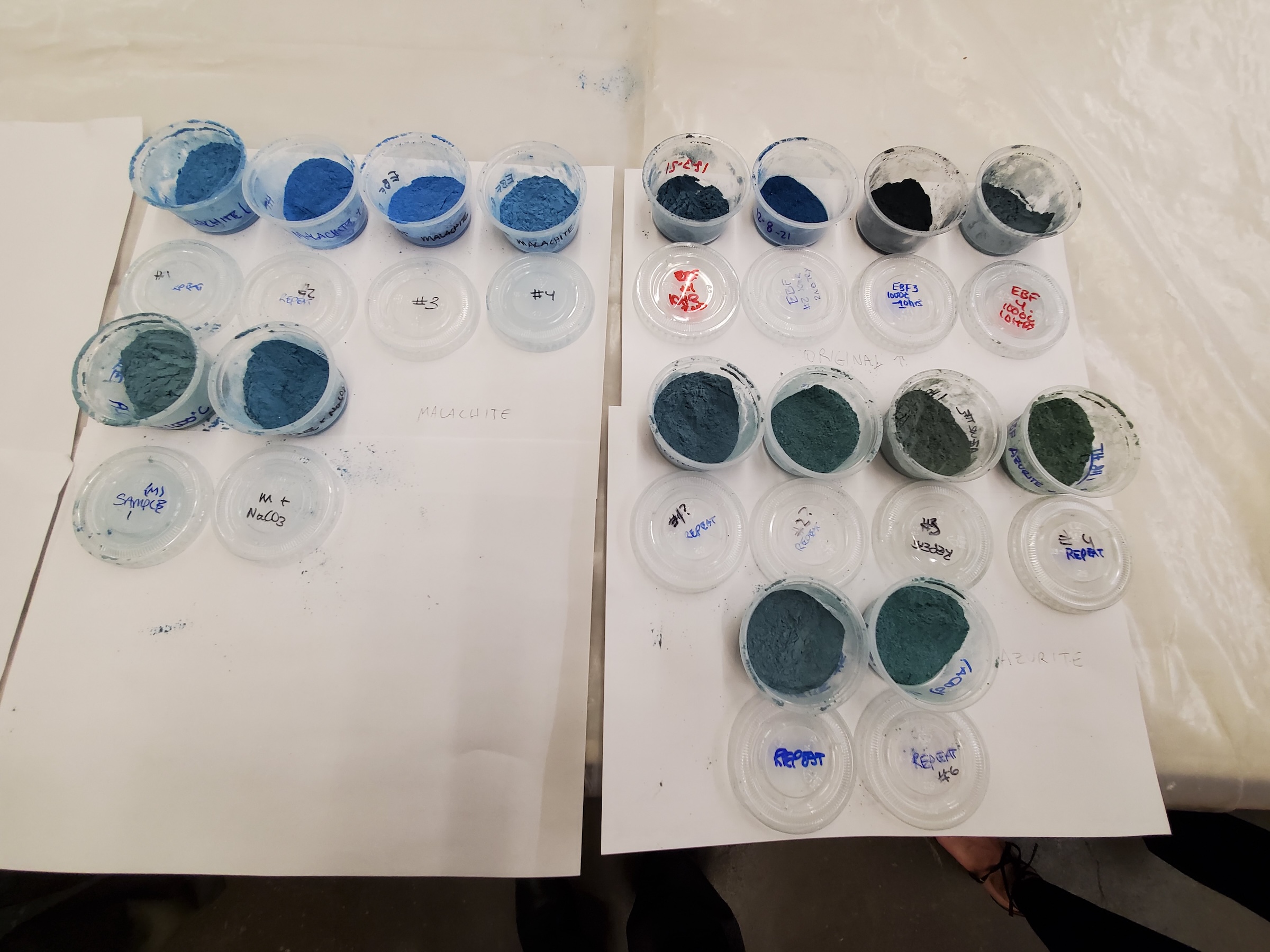[Most Recent Entries] [Calendar View]
Tuesday, June 24th, 2025
| Time | Event |
| 8:00a | “The Vertue of the COFFEE Drink”: An Ad for London’s First Cafe Printed Circa 1652 The story of coffee goes back to the 13th century, when it came out of Ethiopia, then spread to Egypt and Yemen. It reached the Middle East, Turkey, and Persia during the 16th century, and then Europe during the early 17th, though not without controversy. In Venice, some called it the ‘bitter invention of Satan,’ but the Pope, upon tasting it, gave it his blessing. By 1652, the first café in London had opened its doors on St. Michael’s Alley, bringing coffee to England—all thanks to a Sicilian immigrant, Pasqua Rosée. Today, the British Museum houses a handbill that may well be the first advertisement for coffee in England. It proves remarkable for a couple of reasons. First, the ad introduced Brits to what’s now a staple of the Western diet, and eventually they’d bring it to North America. And, what’s more, you can see another instance of the adage that the more things change, the more they stay the same. Advertising is advertising. Then, as now, beverages were sold on their taste and health properties. And, of course, you were encouraged to consume the product not once, but twice a day. You can find a transcription of the text below. Text: THE Grain or Berry called Coffee, groweth upon little Trees, only in the Deserts of Arabia. It is brought from thence, and drunk generally throughout all the Grand Seigniors Dominions. It is a simple innocent thing, composed into a drink, by being dryed in an Oven, and ground to Powder, and boiled up with Spring water, and about half a pint of it to be drunk, fasting an hour before and not Eating an hour after, and to be taken as hot as possibly can be endured; the which will never fetch the skin off the mouth, or raise any Blisters, by reason of that Heat. The Turks drink at meals and other times, is usually Water, and their Dyet consists much of Fruit, the Crudities whereof are very much corrected by this Drink. The quality of this Drink is cold and Dry; and though it be a Dryer, yet it neither heats, nor inflames more than hot Posset. It forcloseth the Orifice of the Stomack, and fortifies the heat with- [missing text] its very good to help digestion, and therefore of great use to be [missing text] bout 3 or 4 a Clock afternoon, as well as in the morning. [missing text] quickens the Spirits, and makes the Heart Lightsome. [missing text]is good against sore Eys, and the better if you hold your Head o’er it, and take in the Steem that way. It supresseth Fumes exceedingly, and therefore good against the Head-ach, and will very much stop any Defluxion of Rheumas, that distil from the Head upon the Stomach, and so prevent and help Consumptionsand the Cough of the Lungs. It is excellent to prevent and cure the Dropsy, Gout, and Scurvy.
It is known by experience to be better then any other Drying Drink for People in years, or Children that have any running humors upon them, as the Kings Evil. &c.
It is very good to prevent Mis-carryings in Child-bearing Women. It is a most excellent Remedy against the Spleen, Hypocondriack Winds, or the like.
It will prevent Drowsiness, and make one fit for Busines, if one have occasion to Watch, and therefore you are not to drink of it after Supper, unless you intend to be watchful, for it will hinder sleep for 3 or 4 hours. It is observed that in Turkey, where this is generally drunk, that they are not troubled with the Stone, Gout, Dropsie, or Scurvy, and that their Skins are exceeding cleer and white. It is neither Laxative nor Restringent. Made and Sold in St. Michaels Alley in Cornhill, by Pasqua Rosee, at the Signe of his own Head. Note: An earlier version of this post appeared on our site in 2012. Related Content “The Virtues of Coffee” Explained in 1690 Ad: The Cure for Lethargy, Scurvy, Dropsy, Gout & More Jim Henson’s Commercials for Wilkins Coffee: 15 Twisted Minutes of Muppet Coffee Ads (1957–1961) The Birth of Espresso: The Story Behind the Coffee Shots That Fuel Modern Life |
| 9:00a | How Scientists Recreated Ancient Egypt’s Long-Lost Pigment, “Egyptian Blue”
Photo courtesy of Washington State University. It’s become fashionable, in recent years, to observe that we live in an increasingly beige-and-gray world from which all color is being drained. Whether or not that’s really the case, all of us still enjoy easy access to a range of colors that nobody in the ancient world could have imagined, and not just through our screens. Look around you, and your eye will soon fall upon some object or another whose hue alone would have looked impossibly exotic in the civilization of, say, ancient Egypt. My coffee cup offers a simple but vivid example, with its blue-green, and maybe yours does too. “Most ancient pigments were derived from natural resources — ochre, charcoal, or lime, for example,” writes Ben Seal at Carnegie Museums of Pittsburgh. “In some cases, Egyptians were able to use lapis lazuli, a metamorphic rock that was only found in Afghanistan, to represent the color blue.” But such a “cost-prohibitive and completely impractical” source, as Seal quotes Carnegie Museum of Natural History Egyptologist Lisa Haney describing it, motivated ancient Egyptians to come up with “a process to emulate its intense ultramarine hue. Without a consistent way to represent the beautiful blues of the world around them, they had to get creative.” Just this past May, Haney and a team of other researchers from CMNH, Washington State University, and the Smithsonian Institution’s Museum Conservation Institute published a paper on their work of re-creating what’s called “Egyptian blue,” the earliest known synthetic pigment. Extant on artifacts and used also, it seems, in ancient Rome, and at least once in the Renaissance (by no less a Renaissance man than Raphael) its original recipe has since been lost to history. Using period materials like “calcium carbonate that could have been drawn from limestone or seashells; quartz sand; and a copper source” heated to around 1,000 degrees Celsius, Seal writes, “the researchers prepared nearly two dozen powdered pigments in a stunning range of blues.”
Photo courtesy of Washington State University. The key was to replicate cuprorivaite, “the mineral that gave Egyptian blue such resonance,” and one of those experimental powders turned out to be 50 percent cuprorivaite by volume. The resulting pigment, as Artnet’s Brian Boucher writes, is of more than historical interest, with potential modern uses “due to its optical, magnetic, and biological properties. It emits light in the near-infrared part of the electro-magnetic spectrum, which people can’t see. For that reason, it could be used in applications like dusting for fingerprints and formulating counterfeit-proof inks.” Here in the twenty-first century, we may have all the blues we need, but as in the ancient world, the job of staying one step ahead of counterfeiters is never done. via Hyperallergic Related content: Behold Ancient Egyptian, Greek & Roman Sculptures in Their Original Color Discover Harvard’s Collection of 2,500 Pigments: Preserving the World’s Rare, Wonderful Colors Why Most Ancient Civilizations Had No Word for the Color Blue Based in Seoul, Colin Marshall writes and broadcasts on cities, language, and culture. His projects include the Substack newsletter Books on Cities and the book The Stateless City: a Walk through 21st-Century Los Angeles. Follow him on the social network formerly known as Twitter at @colinmarshall. |
| << Previous Day |
2025/06/24 [Calendar] |
Next Day >> |


